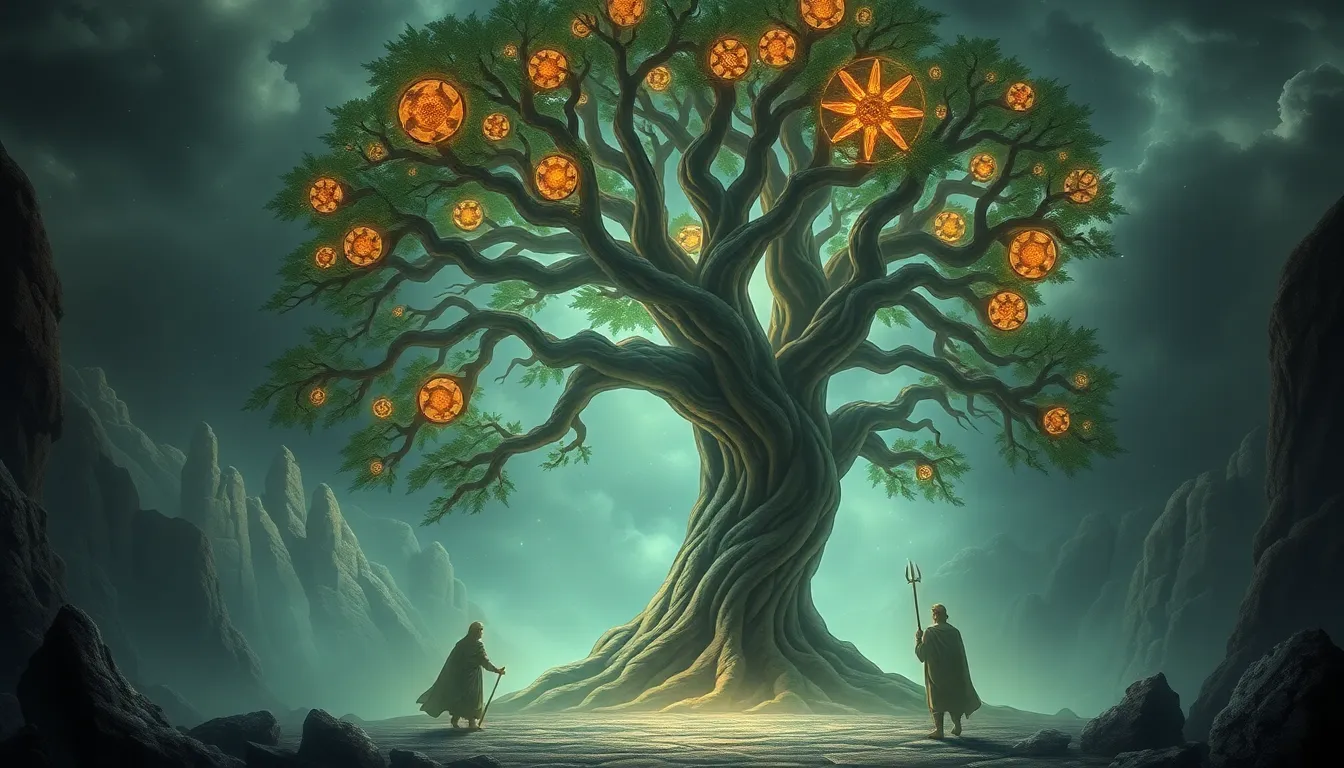The Tanuki in Video Games: From Folklore to Digital Entertainment
I. Introduction
The Tanuki, a creature deeply rooted in Japanese folklore, has captivated imaginations for centuries. Known for its playful nature and magical abilities, the Tanuki embodies traits such as shape-shifting and trickery, making it a fascinating subject of stories and legends. In recent years, this charming creature has made its way into the realm of video games, where it has taken on new life and significance. This article explores the Tanuki’s journey from traditional folklore to modern digital entertainment, highlighting its cultural impact and evolution in the gaming industry.
II. The Origins of the Tanuki in Folklore
A. Historical significance and cultural symbolism
The Tanuki, often referred to as the Japanese raccoon dog, is a symbol of prosperity and good fortune in Japanese culture. Historically, it has been associated with the Shinto religion, where it was believed to be a messenger of the gods. In folklore, the Tanuki is seen as a protector of the rice fields, which are vital to agriculture and sustenance in Japan. Its playful yet mischievous nature has led to various tales that showcase its duality as a trickster and a benevolent spirit.
B. Characteristics and abilities attributed to the Tanuki in legends
Tanuki legends often depict the creature with several supernatural abilities, including:
- Shape-shifting: Tanuki can transform into different objects or beings, often to trick humans.
- Illusions: They are said to create illusions to confuse and play pranks on people.
- Magical pouches: Tanuki are often portrayed as having the ability to carry large objects in their magical pouches.
These characteristics contribute to the Tanuki’s status as both a comical figure and a symbol of the unpredictable nature of life.
III. The Evolution of the Tanuki in Popular Culture
A. Transition from folklore to modern media
As Japan modernized and its culture began to influence the world, the Tanuki transitioned from folklore into various forms of popular media. This evolution saw the Tanuki being represented in literature, film, and art, as well as in the growing realm of video games.
B. Representation in literature, film, and art
In literature, the Tanuki appears in traditional stories, while in film, Studio Ghibli’s “Pom Poko” (1994) vividly showcases the Tanuki’s magical abilities and its struggle against urbanization. The creature has also made appearances in various forms of art, symbolizing change and the blending of nature with human activity.
IV. Iconic Tanuki Characters in Video Games
A. Analysis of notable Tanuki characters
Several iconic Tanuki characters have emerged in the gaming world, each bringing a unique flair to their respective games:
- Tanooki Mario: First introduced in “Super Mario Bros. 3,” Tanooki Mario can fly and turn into a statue, showcasing the shape-shifting nature of the Tanuki.
- Raccoon from Animal Crossing: This character embodies the whimsical and friendly aspects of the Tanuki, contributing to the game’s charm and appeal.
- Tanuki in “The Legend of Zelda”: Various games in this series feature Tanuki-like creatures that provide players with unique abilities and challenges.
B. The impact of these characters on gaming culture
These characters have not only enriched the gaming experience but have also contributed to broader gaming culture. Tanooki Mario, for instance, has become a beloved icon, representing a blend of nostalgia and creativity. The incorporation of Tanuki traits into gameplay mechanics adds depth and enjoyment to the gaming experience, making these characters memorable and influential.
V. Gameplay Mechanics Inspired by Tanuki Folklore
A. Examples of gameplay elements derived from Tanuki abilities
Many gameplay mechanics in video games draw inspiration from Tanuki folklore, enhancing player engagement through interactive storytelling:
- Shapeshifting: Players often gain the ability to transform into different forms, allowing for unique strategies in gameplay.
- Trickery: Some games incorporate elements where players can deceive enemies or create distractions using Tanuki-like abilities.
- Environmental interaction: Players may interact with the game environment in ways that reflect the Tanuki’s connection to nature and its playful spirit.
B. How these mechanics enhance player experience and storytelling
By integrating these mechanics, games not only offer entertaining gameplay but also tell stories that resonate with the themes of transformation and the interplay between nature and humanity, mirroring the essence of Tanuki folklore.
VI. The Tanuki’s Reception in the Gaming Community
A. Fan interpretations and adaptations of Tanuki characters
The gaming community has embraced Tanuki characters, leading to various fan interpretations and adaptations. From fan art to mods, the Tanuki’s playful nature fosters creativity among players, allowing them to express their admiration for these characters in unique ways.
B. Cultural appreciation versus appropriation in gaming
While the Tanuki has been celebrated in gaming, discussions about cultural appreciation versus appropriation arise. It is essential for game developers to portray Tanuki characters respectfully, acknowledging their folklore roots while offering players an engaging experience.
VII. Future of the Tanuki in Digital Entertainment
A. Trends in game design and storytelling involving Tanuki
As the gaming industry continues to evolve, there is a growing trend towards incorporating diverse cultural elements into game design. The Tanuki, with its rich folklore and symbolic significance, holds potential for innovative storytelling and gameplay mechanics that resonate with both Japanese culture and global audiences.
B. Potential for new Tanuki-themed games and narratives
Future game developers may explore new narratives centered around the Tanuki, delving deeper into its folklore and expanding its role in gaming. Potential game concepts could include:
- Open-world adventures where players embody a Tanuki, using its abilities to navigate through mystical landscapes.
- Puzzle games that challenge players to use Tanuki trickery to solve problems and progress through levels.
- Interactive storytelling experiences that explore the struggles and triumphs of Tanuki characters in modern settings.
VIII. Conclusion
The Tanuki’s journey from folklore to video games illustrates the creature’s enduring cultural significance and adaptability. As it continues to inspire game developers and players alike, the Tanuki stands as a reminder of the rich traditions and stories that shape our understanding of the world. With the potential for new narratives and gameplay experiences, the future of the Tanuki in digital entertainment looks promising, inviting players to engage with this beloved figure in fresh and exciting ways.



